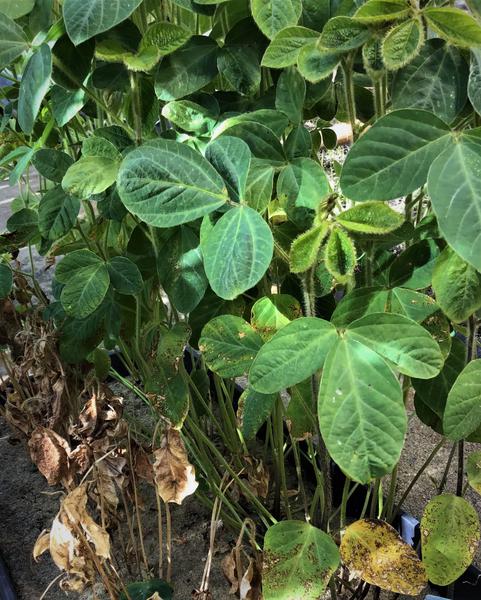Glufosinate Injury
- Type
- Physiological
- Leaf Condition
- Complete Necrosis, Brittle, Leaf Spot
- Leaf Color
- Marginal Chlorosis, Interveinal Chlorosis
- Leaf Location
- Entire, Young, Mature
- Field Distribution
- Random, Edges
- Prior Environmental
- Wind, High Temp
- Season
- Early Vegetative, Mid To Late Vegetative
- Cropping System
- Soybean Followed By Soybean, Conventional Till, Reduced Till
Symptoms
Glufosinate (herbicide group [HG] 10) inhibits the production of glutamine, an amino acid used for chlorophyll production. Glufosinate is a contact herbicide, thus injury will only occur where the spray droplet lands on the soybean plant. Injury incurred by glufosinate includes chlorosis and necrosis. The development of glufosinate injury will be rapid and injury will be greater on hot, humid days. Glufosinate injury can occur on both glufosinate-resistant and –susceptible soybean varieties; however the injury on glufosinate-resistant soybeans will be transient while the glufosinate-susceptible varieties’ injury can range from transient to plant death depending on dose.
Management
Since glufosinate has no residual soil activity, non-glufosinate-tolerant soybeans cannot be injured via carry over. Injury will not be present on emerging soybean plants. Physical drift can be avoided by spraying when the average wind speed is less than 10 miles an hour and mid-day or –afternoon to avoid a temperature inversion.



